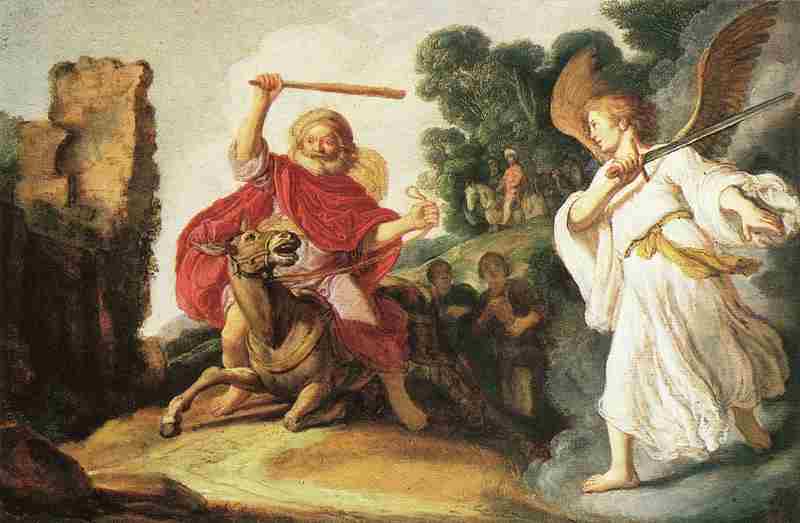
Victory over Sin
Our world is plagued with fear, immorality, selfishness, war, and many other types of sin. As a result, some have lost hope in God’s goodness while others have become apathetic to sin. St. Paul in his first epistle to the Corinthians speaks of the serious consequence of sin when he states, “Do you not know that the unrighteous will not inherit the kingdom of God? Do not be deceived. Neither fornicators, nor idolaters, nor adulterers, nor homosexuals, nor sodomites, nor thieves, nor covetous, nor drunkards, nor revilers, nor extortioners will inherit the kingdom of God” (1 Cor. 6:10).

On the Baptism of Christ
A paraphrased excerpt from "On the Baptism of Christ" by St. Gregory of Nyssa

I'm Bored!
One of the most common complaints I hear from the congregation is that “church is boring!” While I often hear this complaint from parents on behalf of their children, it would be naïve to assume that children are the only ones who express their dissatisfaction about going to church. Adults, often secretly, also share in the same sentiment. In the next series of articles, I hope to address some of the causes of boredom and provide remedies to help you stay engaged in Liturgy.

The Temple of the Holy Spirit
During a period of gloomy captivity and despair for the Israelite nation, the pre-incarnate Logos, Jesus Christ, appears to Prophet Ezekiel roughly 600 years before the incarnation. At the time of the revelation, Ezekiel was sitting in his house in Babylon conversing with other Israelite refugees. Ezekiel, in awe of the glory of God, describes the Logos as “a likeness, like the appearance of fire – from the appearance of His waist and downward, fire; and from His waist upward, like the appearance of brightness, like the color amber” (Ezek. 8:2). The Logos then takes Ezekiel in the spirit from the gathering and shows him four abominations occurring in the most sacred, holiest, and consecrated place on earth – the glorious Temple.

Good or Holy? (3)
Thus far in this series, I presented two stories from the Bible that demonstrate that being “good” by the world’s standards is not really good enough. The discussion of our Lord with the rich, young man and the parable of the ten virgins both indicate that our God desires us not only to be “good,” but also to be holy people. In the last article, we discussed that holiness begins by being conscious of our sins. However, in our postmodern society, it is becoming increasingly difficult to identify our sin, and, therefore, it is even more difficult to repent and attain holiness.

Good or Holy? (2)
In the previous article, we introduced the distinction between “goodness” and “holiness” by examining the story of the rich, young man. We learned from the story that “holiness” is caused by the dwelling of the Holy Spirit in our hearts, whereas “goodness” without holiness is insufficient – the topic that we will continue to discuss in this article as we analyze the parable of the ten virgins.

Good or Holy?
If I were to ask one of your friends to describe your character, chances are they would describe you as a “good” person. In today’s world, it seems that anyone who is not a menace to society is worthy of being labeled a “good” person – your teachers are “good” people (or maybe not, depending on how much homework they give), your colleagues are “good” people, your neighbors are “good” people, and rightfully so. I believe that all people are worthy of being called “good” as a result of being God’s “good” creation (cf. Gen. 1:31). Though the real question is: would your friends describe you as “holy?” The world is full of “good” people, but the world is in desperate need of “holy” people. In this series, I will define and discuss the difference between “good” and “holy” people with hopes that the reader will resolve to grow in their holiness.

Stumbling Block (V) To Eat or Not to Eat?
Around 50-60 A.D., an interesting dilemma developed in the Church of the Corinthians. Throughout the Roman Empire, animal sacrifices were offered to the pagan gods. Following the ritual offering, the remainder of the animal that was not consumed in the ceremony was sold in the public market places. Christians shopping in the market began to question whether it was permissible to eat things sacrificed to idols. In this article, we will see how St. Paul answered this puzzling question, and, from his response, we will learn a general principle that will aid us in avoiding being a stumbling block.
eb219edb2fcf49a69ae2e2c94c0032e0.jpg)
Stumbling Block (IV) The Stumbling Block of Sexual Immorality
In the previous articles, we discussed what it means to be a stumbling block, and we examined how Balaam and Jezebel were stumbling blocks to Israel and how they led the nation to commit fornication. For this reason, I wish to speak in this article about the most common stumbling block that is still plaguing our community: sexual immorality.

Stumbling Block (III) Jezebel, the Stumbling Block Queen
In the last article, we learned how Balaam, in his greed for power and money, became one of the most infamous stumbling blocks in the Bible. In this article, we will learn of someone else who was worse than Balaam, namely Jezebel. Jezebel was married to King Ahab, so she was the Queen of Israel.

Stumbling Block (II) Balaam, the Stumbling Block Prophet
In the last article, we discussed the concept of stumbling blocks and how God greatly despises those who cause His children to fall into sin. In this article, we will examine one of the two most infamous stumbling blocks in the Bible.

Stumbling Block (1) Don’t Be a Stumbling Block, Be a Building Block
A week before my ordination, my family and I were visiting the monastery of St. Paul, located in the eastern desert of Egypt next to the Red Sea. Our gracious tour guide, a very simple monk, unlocked all the ancient churches and showed us many of the ancient buildings. One room that he showed us was the mill room where the monks of old used to grind wheat to make flour for bread. The monks would place the wheat on a flat stone surface, and then a donkey would pull another huge piece of stone, called the mill stone, to roll over, crush, and grind the wheat as illustrated in the following picture.